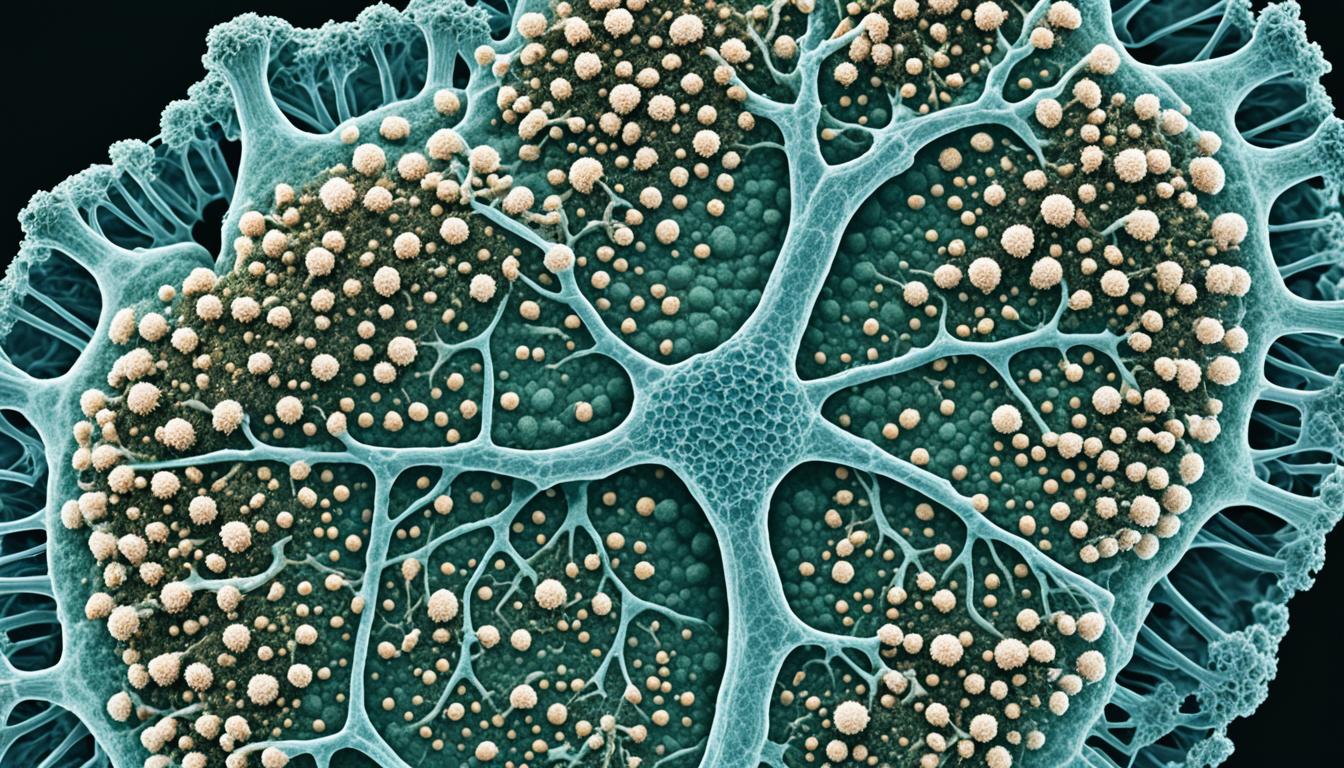Histoplasmosis is a fungal infection caused by the fungus called Histoplasma. It’s found in soil with bird or bat droppings. This illness affects people in the central and eastern U.S., around the Ohio and Mississippi River valleys. It’s also in select parts of Central and South America, Africa, Asia, and Australia.
Inhaling the spores of the Histoplasma fungus causes histoplasmosis. Spores get into the air when the soil is disturbed, like during construction.
Key Takeaways:
- Histoplasmosis is a fungal infection caused by the Histoplasma fungus.
- The fungus is commonly found in soil with bird or bat droppings.
- Central and eastern states of the United States, particularly around the Ohio and Mississippi River valleys, are high-risk areas.
- Contaminated soil can release spores into the air, leading to infection when inhaled.
- Stay informed about the symptoms, causes, diagnosis, and treatment options available for histoplasmosis.
Types of Histoplasmosis and their Symptoms
Histoplasmosis shows up in different ways depending on how severe it is and the body’s defense. There are three main types: acute pulmonary histoplasmosis, chronic cavitary histoplasmosis, and progressive disseminated histoplasmosis.
1. Acute Pulmonary Histoplasmosis:
This is the most common kind and acts like a lung problem. It leads to:
- Fever
- Cough
- Feeling like you have the flu
2. Chronic Cavitary Histoplasmosis:
In this type, holes can form in the lungs. It often happens in people with weak immune systems. Symptoms can be:
- Persistent cough
- Chest pain
- Trouble breathing
3. Progressive Disseminated Histoplasmosis:
When the illness spreads to other organs, it’s called progressive disseminated histoplasmosis. Signs may change based on the infected organ. They might include:
- Weight loss
- Fatigue
- Big liver or spleen
- Swollen lymph nodes
It’s key to know that histoplasmosis can also target particular organs, leading to issues like brain histoplasmosis and ocular histoplasmosis. These need special attention as they can show eye pain, changes in eyesight, or brain problems.
Finding out the type of histoplasmosis is crucial for treatment. Doctors use tests like labs, imaging, and biopsies to figure out the infection’s type and how serious it is.
Stem Cell Therapy as an Advanced Treatment Option
Most histoplasmosis cases are treated well with antifungal drugs like itraconazole or amphotericin B. But, regenerative medicine brings new hope by using stem cell therapy. This advanced method could treat histoplasmosis and boost the immune system.
This therapy uses the healing power of stem cells. It aims to repair tissues and make the immune system stronger. This could help fight off infections, like histoplasmosis.
Even though stem cell therapy for histoplasmosis is new, its initial results are promising. It shows possibility for those with severe or coming-back histoplasmosis. Stem cells can turn into different types of cells and adjust immune responses. This makes them valuable in battling the fungal infection.
Regenerative medicine is fast growing. If stem cell therapy proves safe and effective, it could change how histoplasmosis is managed. Ongoing research looks into this, aiming to bring new solutions to patients.

